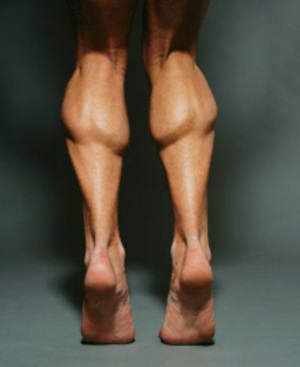So, you were running around outside playing sports and you noticed a pain in your leg, specifically your calf. Well now you’re at home lying on the couch wondering what it was. Well, you’re not alone because this has happened to me a countless number of times. Let me say, it is painful but it’s not the end of the world.
If you think you have strained or pulled your calf muscle here are some of the things you should look for. You probably noticed a sharp pain in the back of your leg where your calf is, this is common in strained or pulled calves. Other signs include difficulty contracting or flexing the muscle, one way to test this is to try and stand on your tip-toes. Pulled calf muscles also tend to swell up really nicely which is usually a key sign of any kind of injury, so check your calfs and compare the size. If one seems significantly bigger than the other either you should start working out your other leg or you have pulled your calf. I hope that helps and you can judge it. Remember this is just a way to check at home if you think that you have pulled it or it is really sevre pain go to the doctor because it might be something else.
You’ve come this far, you’ve been active and you had the sharp pain. Then you read the list of possible symptoms and yes the do apply to you. Well chances are you have successfully pulled your calf muscle. There are a few ways to treat this, obvious thing would be to visit the doctor or you could use the R.I.C.E method. R is rest, always important when trying to heal from anything whether it be an injury or a cold. The next, I, is for ice, another common treatment for any type of muscle injury. Apply an ice pack to the area for about 15-20 minutes at a time about 4 times a day but don’t apply it directly to your skin. Instead wrap the ice pack in something, this should also help to minimize swelling and it just feels soothing. C stands for compression, which can be done using an elastic compression band. You should wrap your leg from the toes up so that you prevent any additional swelling below the wrapping and finally, the E is for is elevation. This means to raise you leg above your heart as much as possible for the first twenty four hours, this should help try to minimize the swelling. It is also recommended that you don’t take aspirin or anything a pulled calf in the first 24 hours because they have medication in them that can prevent clotting.
Now that you have done that, there are a few things you can do during the healing process, that is after the first 24 hours. Stretching really helps pulled muscles, you should hold a stretch for about 10 seconds, remember don’t over do it because you’re trying to recover. Another common method is heat although this is advised only after about 5 days after the injury. This should be used before stretching or before physical activity, again don’t apply the heat directly to your skin wrap it in something or use a heating pad.
Well I hope this helped, I got all my information from the Mount Sinai Medical Centre. Remember these are only remedies if you are really concerned talk to your doctor and follow their advice.
http://www.mountsinai.org/Other/Diseases/Pulled%20calf%20muscle#t6
